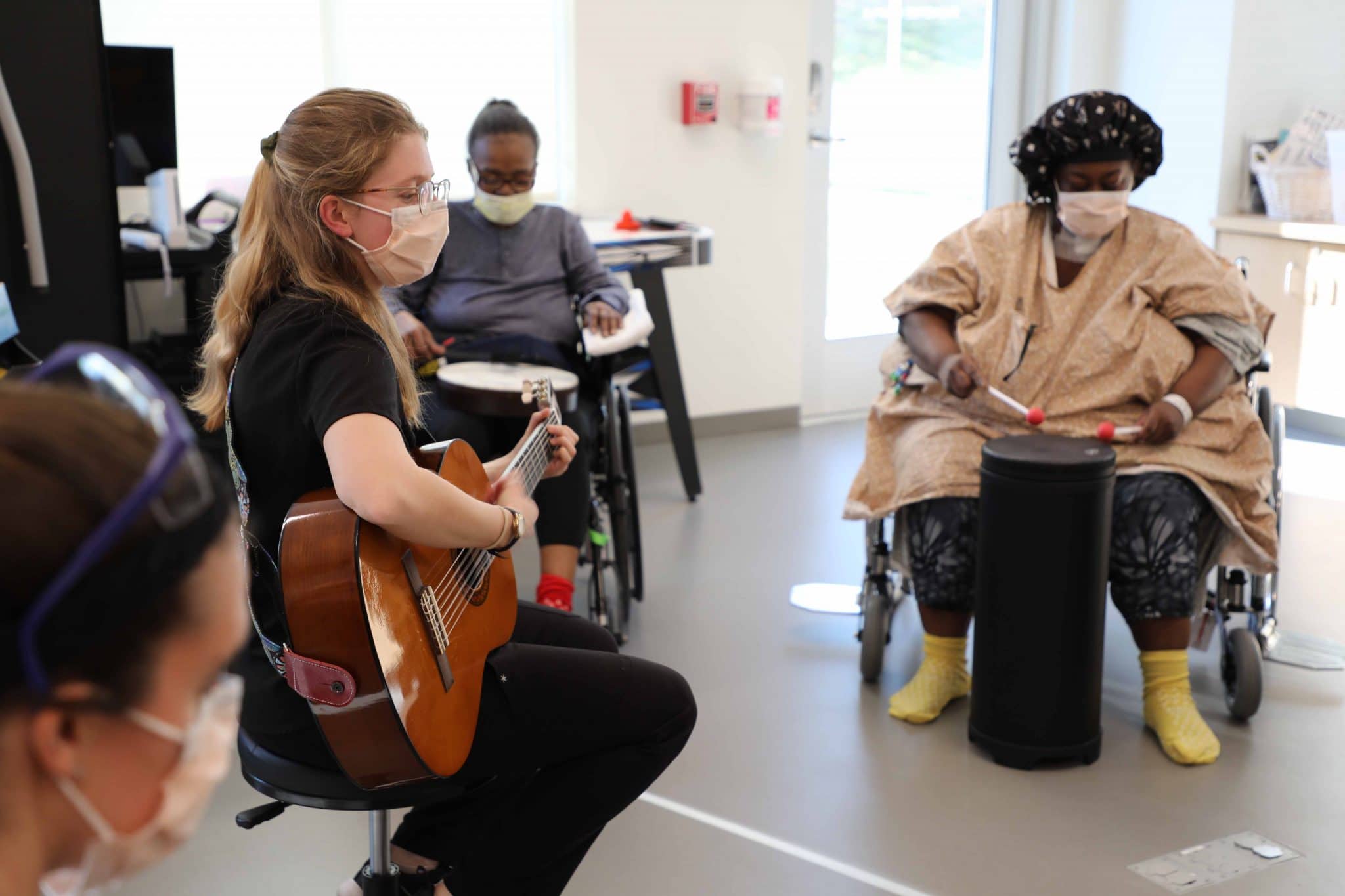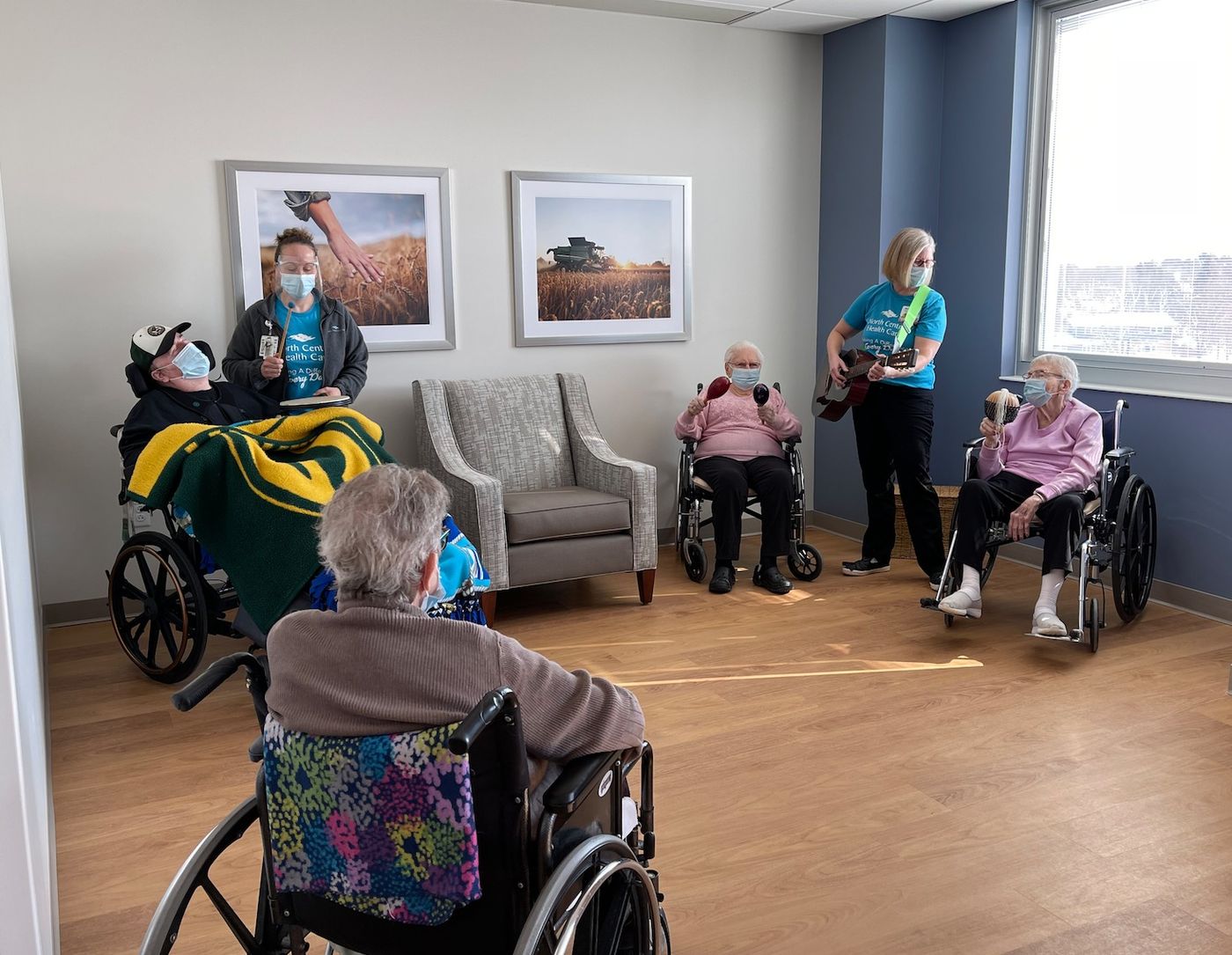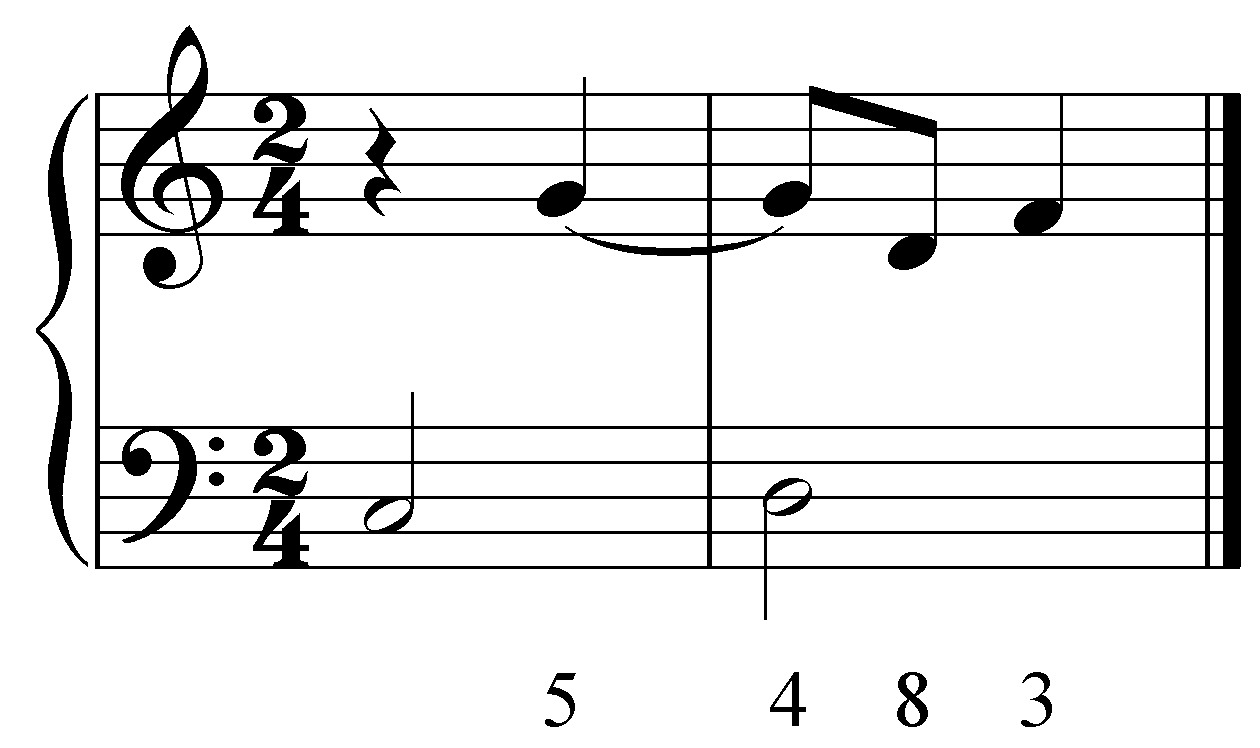Home>Events & Info>Music Therapy>How Many Types Of Music Therapy Are There


Music Therapy
How Many Types Of Music Therapy Are There
Published: February 1, 2024
Discover the various types of music therapy and its benefits. Enhance your well-being through the power of music therapy.
(Many of the links in this article redirect to a specific reviewed product. Your purchase of these products through affiliate links helps to generate commission for AudioLover.com, at no extra cost. Learn more)
Table of Contents
Introduction
Music therapy is a field that utilizes the power of music to improve the physical, emotional, cognitive, and social well-being of individuals. It is a holistic approach that involves the intentional use of music interventions by a trained music therapist to address the specific needs of clients.
Music has been an integral part of human culture for centuries. It has the ability to inspire, uplift, and heal. Music therapy harnesses this inherent power of music to enhance the therapeutic process. It can be applied in various settings such as hospitals, rehabilitation centers, schools, mental health clinics, and nursing homes.
The aim of music therapy is to promote self-expression, emotional release, relaxation, communication, and personal growth. It can be beneficial for individuals of all ages, from infants to the elderly, and can effectively address a wide range of physical, emotional, and cognitive conditions.
There are different types of music therapy approaches that are tailored to meet the specific needs of the individual. Each approach incorporates music in unique ways and has distinct therapeutic goals. In this article, we will explore some of the most common types of music therapy and their benefits.
Types of Music Therapy
Music therapy encompasses a variety of approaches that can be tailored to meet the specific needs of individuals. Here are some of the most common types of music therapy:
- Active Music Therapy: This approach involves active participation in music-making activities such as playing instruments, singing, and movement. It encourages self-expression, creativity, and social interaction.
- Receptive Music Therapy: In receptive music therapy, individuals listen to carefully selected music to promote relaxation, reduce anxiety, and enhance emotional well-being. The therapist guides the client through a passive music experience.
- Nordoff-Robbins Music Therapy: Developed by Paul Nordoff and Clive Robbins, this approach focuses on improvisational music-making. Therapists help individuals, particularly children with developmental disabilities, to communicate and express themselves through music.
- Neurologic Music Therapy: This type of music therapy is specifically designed for individuals with neurological conditions such as stroke, traumatic brain injury, or Parkinson’s disease. It uses music techniques to improve motor skills, speech, and cognitive function.
- Guided Imagery and Music Therapy: This approach combines music with guided imagery techniques to explore and process emotions, memories, and personal experiences. It can be particularly helpful in trauma recovery and personal growth.
- Bonny Method of Guided Imagery and Music Therapy: Developed by Helen Bonny, this approach involves listening to specially selected music while in a relaxed state, allowing the individual to explore their inner thoughts, feelings, and imagery.
- Developmental Community Music Therapy: This approach focuses on using music to promote social skills, communication, and personal development within a group setting. It encourages collaboration, self-awareness, and empathy.
- Analytical Music Therapy: This approach combines music with psychoanalytic techniques to explore unconscious thoughts and emotions. It helps individuals gain insight, process emotions, and develop a deeper understanding of themselves.
Each type of music therapy has its own unique benefits and applications. It is important to work with a qualified music therapist who can assess individual needs and choose the appropriate approach to achieve the desired therapeutic outcomes.
Active Music Therapy
Active music therapy is a dynamic approach that involves active participation in music-making activities. Clients engage in playing instruments, singing, movement, and improvisation, allowing for self-expression and exploration. This type of therapy encourages creativity, social interaction, and personal growth.
Active music therapy can benefit individuals of all ages and abilities. It can be particularly effective for those with developmental disabilities, mental health conditions, or individuals seeking personal growth and self-expression.
During active music therapy sessions, the music therapist provides a supportive and structured environment where clients can freely express themselves through music. Instruments like drums, guitars, keyboards, and percussion instruments are often used to facilitate engagement and self-expression.
The therapist may guide the participants in creating their own music, improvising melodies, and exploring rhythm. The process encourages clients to explore their emotions, thoughts, and experiences in a non-verbal way, making it especially effective for individuals who have difficulty expressing themselves verbally.
Benefits of active music therapy include improved self-esteem, increased self-awareness, enhanced communication skills, and improved emotional regulation. It can also foster a sense of belonging and connectedness within a group setting.
Active music therapy is widely used in a variety of settings, including schools, hospitals, rehabilitation centers, and community organizations. It can be incorporated into individual or group sessions, depending on the needs and goals of the participants.
It is important to note that active music therapy should always be conducted by a trained and qualified music therapist who understands the therapeutic principles and techniques. They will tailor the activities to meet the specific needs of each client and facilitate a safe and supportive environment for exploration and growth.
Receptive Music Therapy
Receptive music therapy is a type of music therapy that involves passive engagement with music. In this approach, individuals listen to carefully selected music chosen by the music therapist to support relaxation, emotional release, and overall well-being.
During receptive music therapy sessions, the therapist creates a calming and supportive environment where clients can fully immerse themselves in the music. The music is carefully chosen based on the individual’s needs and preferences. It can range from calming classical compositions to soothing nature sounds or gentle melodies specifically designed for relaxation.
As clients listen to the music, they are encouraged to focus on the sensations, emotions, and thoughts that arise. This type of therapy allows for deep introspection and can be particularly beneficial for individuals who struggle with self-expression or have difficulty processing emotions.
Receptive music therapy has a wide range of benefits. It can help reduce anxiety, stress, and depression by promoting relaxation and creating a sense of calm. It can also improve emotional well-being by allowing individuals to connect with their inner selves and release pent-up emotions.
Additionally, receptive music therapy can enhance mindfulness and promote a sense of presence in the moment. It allows individuals to engage with the music in a non-judgmental and accepting way, fostering a deeper connection to their emotions and experiences.
This type of therapy can be incorporated into individual sessions, group therapy, or even used as a self-care practice outside of therapy sessions. It can be especially beneficial for individuals who prefer a more introspective and contemplative approach to therapy.
It is important to note that receptive music therapy should be facilitated by a qualified music therapist who has a deep understanding of therapeutic music selection and the ability to create a safe and nurturing environment. The therapist will guide clients through the experience and help them process any emotions or feelings that arise during the session.
Nordoff-Robbins Music Therapy
Nordoff-Robbins Music Therapy is a unique approach to music therapy that focuses on the power of improvisation and creative music-making. Developed by Paul Nordoff and Clive Robbins, this method aims to promote communication, emotional expression, and personal growth through musical interactions.
Originally created to support children with developmental disabilities, Nordoff-Robbins Music Therapy has since expanded to serve individuals of all ages and abilities. The approach emphasizes the potential for musical expression and connection, regardless of musical background or skill level.
In Nordoff-Robbins Music Therapy sessions, the music therapist engages in spontaneous musical improvisation with the client or group. Through playing musical instruments, singing, or vocalizing, participants are encouraged to explore their creativity, express their emotions, and communicate non-verbally.
The therapist follows the lead of the client, responding musically to their cues and creating a supportive and interactive musical environment. This type of therapy allows individuals to engage in a unique form of self-expression that may not be possible through spoken language alone.
Nordoff-Robbins Music Therapy is particularly effective for individuals with developmental disabilities, autism spectrum disorders, or those who have limited verbal communication skills. It can help enhance communication, social interaction, and emotional well-being.
The approach also recognizes the inherent musicality in individuals, regardless of their musical training or abilities. By focusing on the process of creating music rather than the end result, Nordoff-Robbins Music Therapy creates a space for individuals to explore and express themselves freely, without judgment or expectations.
Music therapists who practice Nordoff-Robbins Music Therapy undergo specialized training to develop the skills necessary to facilitate improvisation and creative music-making. They are trained to create a safe and nurturing environment where individuals can freely explore their musical potential.
Overall, Nordoff-Robbins Music Therapy offers a powerful means of communication, self-expression, and personal growth through the medium of music. It celebrates the uniqueness of each individual and encourages the exploration of one’s musical voice to foster connection, emotional well-being, and personal empowerment.
Neurologic Music Therapy
Neurologic Music Therapy (NMT) is a specialized type of music therapy that is specifically designed for individuals with neurological conditions. It utilizes the power of music to stimulate and engage the brain in order to address cognitive, sensory, and motor impairments.
Music has a unique ability to access different areas of the brain, and NMT capitalizes on this phenomenon to optimize therapeutic outcomes. NMT techniques are based on scientific research and are tailored to the individual needs of each client.
During NMT sessions, a trained music therapist uses music in a structured and intentional way to target specific neurological functions. The therapist may incorporate rhythm, melody, and musical elements to support motor coordination, speech and language skills, cognitive function, or emotional regulation.
For example, rhythmic auditory stimulation (RAS) can be used to improve gait and coordination in individuals with movement disorders. By synchronizing movements with a rhythmic beat, the brain is stimulated to enhance motor planning and execution.
Melodic intonation therapy (MIT) is another technique used in NMT to facilitate speech and language recovery in individuals with aphasia or other communication disorders. By singing or chanting phrases with melodic intonation, different areas of the brain are engaged to support language production and expression.
NMT can also be beneficial for individuals with cognitive impairments or memory loss. Music can serve as a powerful mnemonic device, triggering memories and facilitating cognitive functioning. It can be used to improve attention, memory recall, and overall cognitive abilities.
One of the key principles of NMT is the individualized nature of the therapy. Each client’s specific goals, needs, and preferences are taken into account to create a personalized treatment plan. The therapist conducts thorough assessments to identify areas of strength and areas for improvement, and then implements appropriate music interventions.
NMT is used in various clinical settings, including rehabilitation centers, hospitals, and specialized neurological clinics. It is important to work with a trained and certified NMT practitioner who has a deep understanding of the neurological processes and can apply the appropriate music interventions.
By tapping into the brain’s natural response to music, Neurologic Music Therapy offers a highly effective and engaging approach to help individuals with neurological conditions regain or improve their functioning, enhance their quality of life, and promote neuroplasticity.
Guided Imagery and Music Therapy
Guided Imagery and Music (GIM) therapy is an integrative approach that combines music and guided imagery techniques to facilitate deep exploration and healing. It involves using carefully selected music to guide individuals through a journey of imagery, emotions, and self-reflection.
In GIM therapy sessions, a trained therapist creates a safe and supportive environment for individuals to relax and enter a state of focused attention. They guide the clients through a structured process of listening to music while encouraging them to visualize images, memories, and sensations that arise.
The music serves as a catalyst to evoke emotions, memories, and unconscious material, while the therapist provides verbal prompts and support to facilitate exploration and processing. The individual’s own unique imagery experiences are valued and respected, allowing for a deeply personal and transformative experience.
Guided imagery can be used to explore various aspects of one’s life, emotions, past experiences, or future aspirations. It can help individuals gain insight, access inner resources, and develop a deeper understanding of themselves and their journey.
GIM therapy can be particularly beneficial for individuals dealing with trauma, grief, stress, or seeking personal growth and self-discovery. It allows for a safe and creative space to explore and process complex emotions and experiences.
Research has shown that GIM therapy can have a positive impact on psychological well-being, reducing anxiety, depression, and stress levels. It can also enhance emotional regulation, increase self-awareness, and foster a sense of empowerment.
One well-known approach within GIM therapy is the Bonny Method of Guided Imagery and Music (BMGIM). Developed by Helen Bonny, this method involves using classical music selections to guide the individual’s imagery experiences.
During BMGIM sessions, the music therapist takes on the role of a facilitator, allowing the client’s imagery to unfold naturally while providing support and guidance. The sessions typically consist of a series of sessions, referred to as “trips,” which can be tailored to the individual’s needs and goals.
It is important to work with a certified music therapist trained in GIM or BMGIM to ensure proper guidance and expertise in facilitating this transformative therapeutic approach.
Overall, guided imagery and music therapy offers a unique and powerful avenue for self-exploration, healing, and personal growth. It harnesses the combined power of music and imagery to tap into the richness of the mind and emotions, fostering deep insights and positive changes.
Bonny Method of Guided Imagery and Music Therapy
The Bonny Method of Guided Imagery and Music (BMGIM) therapy is a specialized form of guided imagery and music therapy that uses classical music to facilitate deep exploration and transformation. Developed by Helen Bonny, this method combines the power of music and imagery to access and engage the whole person—body, mind, and spirit.
In BMGIM therapy sessions, the client is guided through a journey of inner exploration while listening to carefully selected classical music. The therapist acts as a facilitator, providing verbal prompts and support to assist the individual’s exploration of imagery, emotions, memories, and sensations.
The classical music acts as a catalyst to stimulate the client’s imagination and access deep levels of consciousness. The specific music selections are chosen based on the individual’s needs and goals, creating a unique and personal experience for each client.
Through BMGIM therapy, individuals have an opportunity to explore the symbolism and personal meaning within their imagery experiences. The therapist supports the client in exploring the emotions, insights, and personal connections that arise during the session.
The Bonny Method is often conducted in a series of sessions, referred to as “trips,” each with its own thematic focus. These trips can range from exploring personal narratives and inner landscapes to delving into archetypal themes or working on specific therapeutic goals.
The BMGIM therapy process is highly individualized, taking into consideration the unique needs, experiences, and preferences of each client. It can be used to address a wide range of issues, including trauma, grief, personal growth, self-discovery, and spiritual exploration.
Research has demonstrated the effectiveness of BMGIM therapy in various populations, including those with mental health conditions, individuals dealing with trauma, and individuals seeking personal transformation. The experience of BMGIM therapy can lead to increased self-awareness, emotional healing, personal empowerment, and a deeper understanding of oneself.
It is important to work with a certified BMGIM therapist who has undergone specialized training and supervision in the Bonny Method. They will have the necessary skills and knowledge to guide individuals through this deep and transformative therapeutic process.
The Bonny Method of Guided Imagery and Music therapy offers a unique and powerful approach to self-exploration, healing, and personal growth. By combining the evocative power of classical music with guided imagery techniques, it provides a profound opportunity for individuals to journey within themselves and unlock their inner resources and potential.
Developmental Community Music Therapy
Developmental Community Music Therapy (DCMT) is an inclusive approach to music therapy that focuses on fostering social connection, self-expression, and personal development within a community setting. It recognizes the power of music to bring people together and create a sense of belonging and shared experience.
In DCMT, the music therapist works with groups of individuals, often in community settings such as schools, residential facilities, or community centers. The therapy sessions involve active music-making, singing, drumming, and movement, encouraging participants to engage and interact with one another through the medium of music.
The goal of DCMT is to promote social skills, communication, and personal growth within the group dynamic. It provides a supportive and inclusive environment where individuals of all abilities and backgrounds can come together to create music and explore their own unique musical voices.
Through the shared experience of making music together, participants in DCMT develop important social skills such as turn-taking, active listening, and cooperation. They learn to communicate and express themselves non-verbally through music, which can be especially beneficial for individuals who struggle with verbal communication.
DCMT also encourages self-expression and personal development. Participants have the opportunity to explore their emotions, thoughts, and experiences through improvisation, songwriting, and musical performance. This can lead to increased self-confidence, self-awareness, and a greater sense of empowerment.
One key aspect of DCMT is the community aspect. The therapy sessions are designed to bring people together and create a sense of unity and support. The music therapist facilitates a safe and nurturing environment where participants feel accepted, valued, and heard.
DCMT can be particularly effective in educational settings, as it can enhance learning, creativity, and emotional well-being. It can also be beneficial in mental health settings, where it can provide a sense of connection and support for individuals experiencing mental health challenges.
The role of the music therapist in DCMT is to facilitate and guide the musical interactions and experiences. They create a structure for the sessions while allowing for individual expression and participation. The therapist also helps individuals reflect on their experiences and integrate the therapeutic benefits of the music-making process.
Overall, Developmental Community Music Therapy provides a powerful platform for individuals to come together, express themselves, and develop important social and emotional skills. It celebrates the diversity within the group and fosters a sense of community, connection, and personal growth through the shared experience of making music together.
Analytical Music Therapy
Analytical Music Therapy is a unique approach that combines the principles of psychoanalysis with the power of music. It aims to explore and uncover unconscious thoughts, emotions, and experiences through the medium of music.
In analytical music therapy sessions, the therapist encourages individuals to engage with music in a reflective and introspective manner. The therapist carefully selects music that resonates with the client’s emotional and psychological needs, often using classical or instrumental compositions.
Through listening to and engaging with the selected music, clients are encouraged to explore their own emotional responses and associations. The music serves as a channel for expression and a catalyst for accessing deeply buried emotions and memories that may be difficult to articulate verbally.
The therapist helps individuals make connections between the musical experiences and their own personal narratives, working collaboratively to gain insight and understanding of the underlying psychological dynamics.
Through the process of analytical music therapy, individuals can gain a deeper self-awareness, uncover unconscious patterns, and process unresolved emotions. This approach can be particularly beneficial for individuals struggling with psychological issues such as trauma, depression, anxiety, or unresolved conflicts.
By bringing the hidden and often unconscious aspects of the psyche to the surface, analytical music therapy facilitates a deeper understanding of one’s emotional, mental, and relational landscape. It can offer individuals the opportunity to work through unresolved issues, gain insight into their experiences, and create a foundation for personal growth and healing.
It is important to note that analytical music therapy is conducted by trained music therapists who have received specialized postgraduate training in psychoanalytic theory and practice. They possess a deep understanding of psychological dynamics and the ability to hold a safe and supportive therapeutic space.
Analytical music therapy can be used in various settings, including mental health clinics, private practices, and rehabilitation centers. The therapy may be conducted on an individual basis or in small groups where the therapeutic benefits of shared experiences and group dynamics can be explored.
In summary, analytical music therapy offers a unique and profound approach to therapy, utilizing the powerful combination of music and psychoanalytic techniques. By accessing the unconscious through music, individuals can gain deeper insight, resolve emotional conflicts, and embark on a journey of self-discovery and healing.
Conclusion
Music therapy is a diverse and dynamic field that harnesses the power of music to promote healing, well-being, and personal growth. Through various approaches such as active music therapy, receptive music therapy, Nordoff-Robbins music therapy, neurologic music therapy, guided imagery and music therapy, Bonny Method of guided imagery and music therapy, developmental community music therapy, and analytical music therapy, individuals of all ages and abilities can benefit from this holistic and integrative therapeutic modality.
Active music therapy encourages self-expression, creativity, and social interaction through musical activities. Receptive music therapy promotes relaxation, emotional release, and improved well-being through passive engagement with carefully selected music. Nordoff-Robbins music therapy focuses on improvisation and creative music-making to foster communication and self-expression, particularly for individuals with developmental disabilities.
Neurologic music therapy uses music techniques to address specific neurological conditions, such as motor skills, speech, and cognitive function. Guided imagery and music therapy combines music with guided imagery techniques to explore emotions, memories, and personal experiences. The Bonny Method of guided imagery and music therapy utilizes classical music to facilitate deep exploration and transformation.
Developmental community music therapy emphasizes social skills, communication, and personal development within a group setting, enhancing collaboration and empathy. Analytical music therapy combines psychoanalytic techniques with music to explore unconscious thoughts and emotions with the goal of gaining insight and self-understanding.
Each type of music therapy has its own unique benefits and applications. Whether it is promoting self-expression, improving communication skills, fostering emotional healing, enhancing cognitive function, or facilitating social interaction, music therapy offers a versatile and effective therapeutic approach.
It is important to work with qualified and trained music therapists who have a deep understanding of therapeutic principles and techniques. They can tailor the music therapy interventions to meet the specific needs and goals of each individual, creating a safe and supportive environment for growth and healing.
In conclusion, music therapy is a powerful and transformative modality that utilizes the universal language of music to address physical, emotional, cognitive, and social needs. It offers individuals a unique and engaging way to express themselves, explore their emotions, and connect with others. With its wide range of approaches, music therapy has the potential to positively impact the lives of individuals of all ages and abilities, providing healing, personal growth, and a deeper connection to oneself and others.











